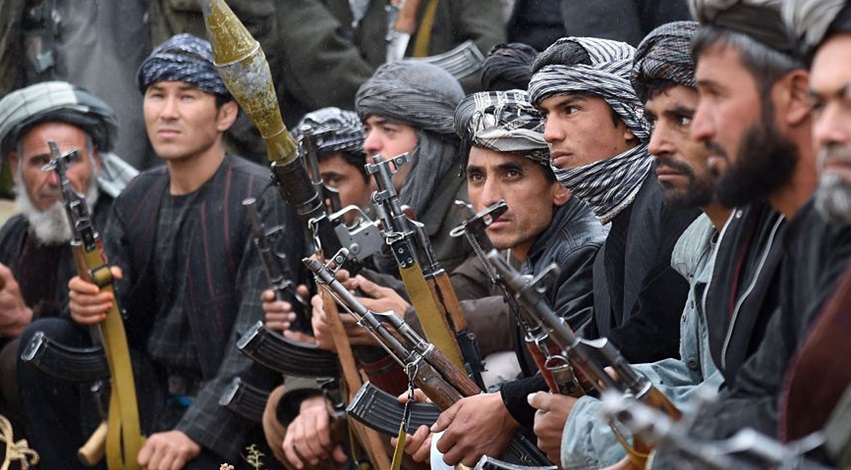Afghanistan’s security apparatus, even after 15 years of NATO presence, is still fragile. Nothing is hindering Taliban to launch on and off destructive offenses in Afghanistan. Furthermore, the year 2017 is instigating multiple terror attacks in Afghanistan; Major Afghan cities were traumatized by consecutive deadly assaults thereby tens of people were killed and wounded. The first happening this January 2017 shook Kabul with twin blasts near the Afghan Parliament in a congested area which killed at least 50 people and more than 100 wounded including Rahima Jami, a member of parliament from Herat province. The second attack in southern Afghanistan, at a guesthouse belonging to the governor of Kandahar province killed 11 with five United Arab Emirates’ diplomats and wounded 18 others. SIGAR’s latest report released on January 30, 2017 revealed deadly figures of up to 19,000 terrorist attacks occurring in the last 10 months at the hands of the Taliban and ISIS insurgents compared to only 700 counter-insurgency operations by Afghan Security Forces in Afghanistan. This exhibits the magnitude of the security challenge that the Afghan Government is faced with.
Encountering such relentless terrorist offensives by insurgents, impairing the authority of the Afghan Government, Kabul has once again turned to old school rules by engaging pro-government militias to counter Taliban and ISIS. The effort is anticipated to ultimately mobilize thousands of Afghans especially from the northern region of the country to confront Taliban in areas where the Afghan military and police forces are losing ground or have had little presence. This kind of strategy to turn to irregular forces is stirring up apprehensions of discordant conflicts and civil dissension in a country still haunted by the civil strife of the 1990s in which fighting militia leaders ripped the country apart.
In Afghanistan, regimes have, since long before the existing chapter of the conflict, depended on the parallel authority of local warlords and their tribal forces. These examples have also motivated US military officers since 2001 to cultivate local paramilitary concepts. Before conceptualizing the Afghan Local Police (ALP), US military tested with numerous kinds of community defense forces; often referred to by the Americans as ‘Village Stability Operations’. Other examples include the Afghan National Auxiliary Police (ANAP), Afghan Public Protection Program (AP3), Critical Infrastructure Police (CIP), Community Based Security Solutions and Interim Security for Critical Infrastructure (ISCI).
Pro-government militias are a prominent feature of civil wars. Permitting groups that are not totally assimilated into the formal security apparatus to carry arms is a substantial security risk as their ambiguous allegiances nurture the prospect of treachery. Often, such militias are recruited from the existing illegal armed groups. In ethnically diverse districts, militias are designed along ethnic lines and coincide with macro-ethnic divisions. This leads to recruitment based on ethnicity and party affiliation: ‘Pashtuns siding with Hezb-i Islami and Etehad-i-Islami; Tajiks with Jamiat-i Islami; and Uzbeks and Turkmen with Jumbesh-i Melli’ and so on. This can escalate further conflict and chaos on ethnic lines. Hence, Afghan government should not look forward to drawing support from such militias.
Letting militias which do not fall in the formal security apparatus of the state to do this job can have serious implications in the long run. Studies such as “Hired Guns: The Conflict Patterns and Role of Pro-Government Militias” by Roudabeh Kishi/Clionadh Raleigh and “Pro-Government Militias and the Repertoires of Illicit State Violence” by Ariel I. Ahram show that such groups are often involved in criminal activities and civil wars provide them with opportunities for private gains. Peace, on the other hand, limits that opportunity. Hence, prolonging conflicts become self-enforcing. Reports by International Crisis Group and Human Rights Watch reveal that members of pro-government militias are involved in killing civilians, fraud, theft, rape, kidnapping, drugs trafficking and extortion. United Nations Assistance Mission in Afghanistan’s (UNAMA) annual report on Protection of Civilians in Armed Conflict 2016 (released early February 2017) shows that pro-government armed groups are responsible for 185 civilian casualties (52 deaths and 133 injured) which makes 2% of total causalities in 2016.
Some government officials also acknowledge the repression and brutalities inflicted by these militias and the fact that it is very difficult to rein them in. Repression occurs when you support these militias, not freedom. Hence, there should be zero tolerance for such militias, and monopoly over using legitimate force should be consolidated in a single institution – the Afghan National Army and its subsidiaries. Afghan army was considered to be made of puffs, but it is real, Afghan forces are standing on the ground and have confronted the militants mostly alone. Irrespective of the progress, Afghan Security Forces are there on the field resisting even with their meager resources. Thus, it should be trusted and let the institutions be allowed to evolve over time for fruitful results.
Kabul’s desperation in shaking hands with pro-government militias to fight Taliban and ISIS illustrates the idiom, “a drowning man catches at a straw”. It should be kept in mind that institutional building happens by continuity, irrelevant of the progress in the long run. Desperation towards such tactics will yield a plethora of complex issues causing never-ending glitches, as power unbounded is power that corrupts and is unaccountable.
The author Saddam Hussein is a research intern at the Center for Research and Security Studies while pursuing his M Phil. in Public Policy from School of Public Policy, PIDE Islamabad.

